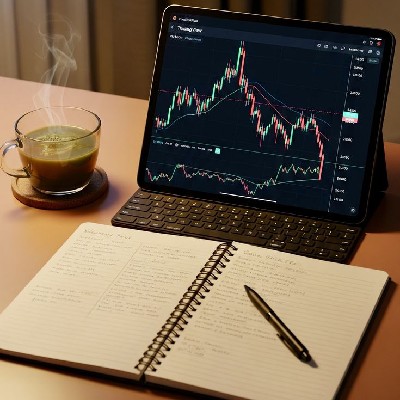WILD/TWD 匯率換算器
Wilder World 市場資訊
今日Wilder World即時價格TWD
在2025年12月7日,加密貨幣市場展現出謹慎樂觀的景象,這種態勢受到顯著的技術進步、不斷演變的監管框架和影響力宏觀經濟因素的影響。雖然比特幣正經歷著混合的市場情緒,但以太坊在機構投資方面持續上升,而新興的山寨幣敘事則在一個更明確的監管環境中吸引投資者的注意。
比特幣(BTC)目前正經歷著價格波動,情緒在本月初偏向謹慎。比特幣的價格在12月6日左右為89,927美元,分析師正在關注約80,400美元至80,600美元的關鍵支撐位。儘管傳統上12月是一個對比特幣來說表現更強的月份,但包括11月達到34.8億美元的ETF流出在內的近期趨勢表明,短期展望更加保守。儘管如此,一些預測則表明比特幣有潛力突破接近93,000美元至94,000美元的阻力位,可能推動價格向100,000美元甚至110,000美元至111,000美元邁進,如果看漲的動能能克服當前的阻礙。這一潛在的反彈在很大程度上與更廣泛的宏觀經濟利好因素相關。預計聯邦儲備將於本月進行25個基點的利率減少,並結束量化緊縮,將有助於市場注入流動性並支撐像加密貨幣這樣的風險資產。然而,若利率減少的步伐暫停,則比特幣的價格可能會回落至90,000美元以下。機構採用仍然是推動比特幣的重要因素,隨著加密ETF流入的增加進一步推動需求。
以太坊(ETH)位於技術創新和機構整合的最前沿。在2025年12月3日,網絡啟用了重要的“Fusaka”升級,這根本改變了以太坊管理滾動數據的方式。這次升級利用PeerDAS,將blob容量提升至八倍,並確保機構滾動操作商更可預測的費用環境。這些進步對以太坊鞏固其作為去中心化金融(DeFi)、不可替代代幣(NFT)和Web3應用程序的支柱作用至關重要。第二層擴展解決方案快速擴展,提高通量並降低交易成本,使以太坊在與競爭區塊鏈的比較中處於有利地位。還期待第二層集群內的本地互操作性增強,促進資產和數據的更順暢的轉移。以太坊正在經歷機構參與的熱潮,尤其是在現實世界資產(RWA)的代幣化方面。包括貝萊德、富蘭克林坦普頓和阿蒙迪在內的主要金融機構正積極在以太坊區塊鏈上部署代幣化產品,促成超過110億美元的代幣化價值,並使以太坊在這個新興行業中成為領導者。
更廣泛的山寨幣市場受到比特幣和以太坊的動向影響,但特定的敘事開始創造自己的動能。2025年的主要趨勢領域包括AI x 加密、去中心化物理基礎設施網絡(DePIN)、現實世界資產(RWA)、索拉納表情幣和模塊化區塊鏈。其他重要的敘事包括比特幣質押、流動質押、再質押、穩定幣和加密ETF,這些都吸引了相當大的注意力。儘管某些來源顯示出山寨幣中持續的看跌情緒,但其他來源則指出尤其是那些基本面強勁或敘事引人注目的項目的潛在回暖。萊特幣繼續展示出韌性和實用性,以其實用性和成熟的記錄而受到認可。與此同時,像MoonBull和La Culex這樣的表情幣透過強大的品牌、社區參與和敘事驅動的更新獲得了 traction。BullZilla 也被認為是領先的加密預售,獲得了初期投資者的強烈興趣。
全球加密貨幣的監管環境正在成熟,2025年標誌著從不確定性向實施更清晰框架的關鍵轉變。這種監管清晰度是加速機構採用該行業的一個關鍵因素。穩定幣在政策制定者中被特別關注,2025年超過70%的法域正在推進新監管。在美國,“指導和建立美國穩定幣創新法案”(GENIUS Act)於2025年7月18日簽署成為法律,建立了全面的聯邦框架,要求支付穩定幣100%的支持,以高品質的流動資產為擔保。目前的美國監管立場正在演變為更友好的加密貨幣立場,其他法案(如數字資產市場清晰法案(CLARITY Act))也在考慮中。在國際上,MiCA的實施使得歐盟內部形成統一的監管框架,而迪拜虛擬資產監管局(VARA)也發布了更新的規則手冊,進一步鞏固全球監管標準。
總之,2025年12月7日的加密市場以整合和戰略增長的結合為特徵。儘管中央銀行政策等宏觀經濟因素持續影響,但該行業受益於強勁的技術創新,特別是在以太坊上,並且快速明確的監管環境加強了機構信心。投資者密切觀察這些力量如何相互作用,塑造未來幾週及以後數位資產的軌跡。
您認為今天 Wilder World 價格會上漲還是下跌?
目前您已了解 Wilder World 今日價格,您也可以了解:
如何購買 Wilder World(WILD)?如何出售 Wilder World(WILD)?什麼是 Wilder World(WILD)?如果您購買了 Wilder World (WILD) ,會發生什麼事?今年、2030 年和 2050 年的 Wilder World (WILD) 價格預測?哪裡可以下載 Wilder World (WILD) 的歷史價格數據?今天其他同類型加密貨幣的價格是多少?想要立即獲取加密貨幣?
使用信用卡直接購買加密貨幣。在現貨平台交易多種加密貨幣,以進行套利。Wilder World價格預測
什麼時候是購買 WILD 的好時機? 我現在應該買入還是賣出 WILD?
WILD 在 2026 的價格是多少?
2026 年,基於 +5% 的預測年增長率,Wilder World(WILD)價格預計將達到 NT$1.79。基於此預測,投資並持有 Wilder World 至 2026 年底的累計投資回報率將達到 +5%。更多詳情,請參考2025 年、2026 年及 2030 - 2050 年 Wilder World 價格預測。WILD 在 2030 年的價格是多少?
Wilder World (WILD) 簡介
虚拟货币Wilder World是一种具有重要历史意义和独特特点的加密货币。它作为一种基于区块链技术的数字资产,已经成为数字经济中不可或缺的一部分。
Wilder World的历史意义体现在其作为一个去中心化的虚拟现实元宇宙平台的数字货币。元宇宙是一个虚拟的数字世界,模拟了现实世界的各种活动和交互。Wilder World的虚拟货币在这个平台上的使用和交易,使得用户能够参与元宇宙的活动,拥有和交易虚拟资产,并与其他用户进行互动。
Wilder World的重要特点之一是其去中心化的性质。这意味着Wilder World虚拟货币不受任何中央机构或政府的控制。相反,它通过区块链技术实现透明、安全和去中心化的交易。这为用户提供了更大的自主权和隐私保护。
Wilder World虚拟货币还具有良好的可替代性和可分割性。它可以被用作交换媒介,作为一种价值存储的手段,或者作为一种投资资产。此外,Wilder World平台还提供了丰富的虚拟艺术品,虚拟房地产和其他虚拟资产,这些资产可以用Wilder World货币购买和交易。
对于数字经济的发展来说,Wilder World虚拟货币有着重要的意义。它不仅促进了元宇宙的发展和实现了艺术品、游戏和娱乐产业的创新,还为用户提供了新的经济模式和交互方式。
总而言之,Wilder World虚拟货币作为一种具有重要历史意义和独特特点的加密货币,在数字经济和元宇宙的发展中发挥着重要的作用。它的去中心化、可替代性和可分割性特征使其成为一个吸引人的数字资产,为用户提供了丰富的虚拟体验和经济机会。
Bitget 觀點




您可以用 Wilder World (WILD) 之類的加密貨幣做什麼?
輕鬆充值,快速提領買入增值,賣出套利進行現貨交易套利進行合約交易,高風險和高回報透過穩定利率賺取被動收益使用 Web3 錢包轉移資產什麼是 Wilder World,以及 Wilder World 是如何運作的?
全球Wilder World價格
購買其他幣種
常見問題
Wilder World 的目前價格是多少?
Wilder World 的 24 小時交易量是多少?
Wilder World 的歷史最高價是多少?
我可以在 Bitget 上購買 Wilder World 嗎?
我可以透過投資 Wilder World 獲得穩定的收入嗎?
我在哪裡能以最低的費用購買 Wilder World?
相關加密貨幣價格
Bitget 平台新上架幣種的價格
熱門活動
您可以在哪裡購買Wilder World(WILD)?
影片部分 - 快速認證、快速交易










